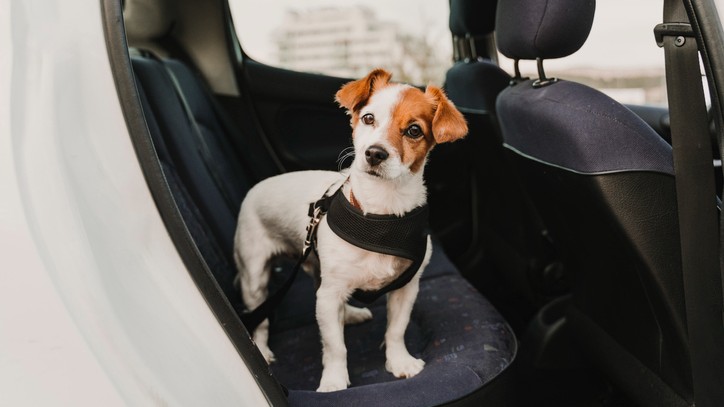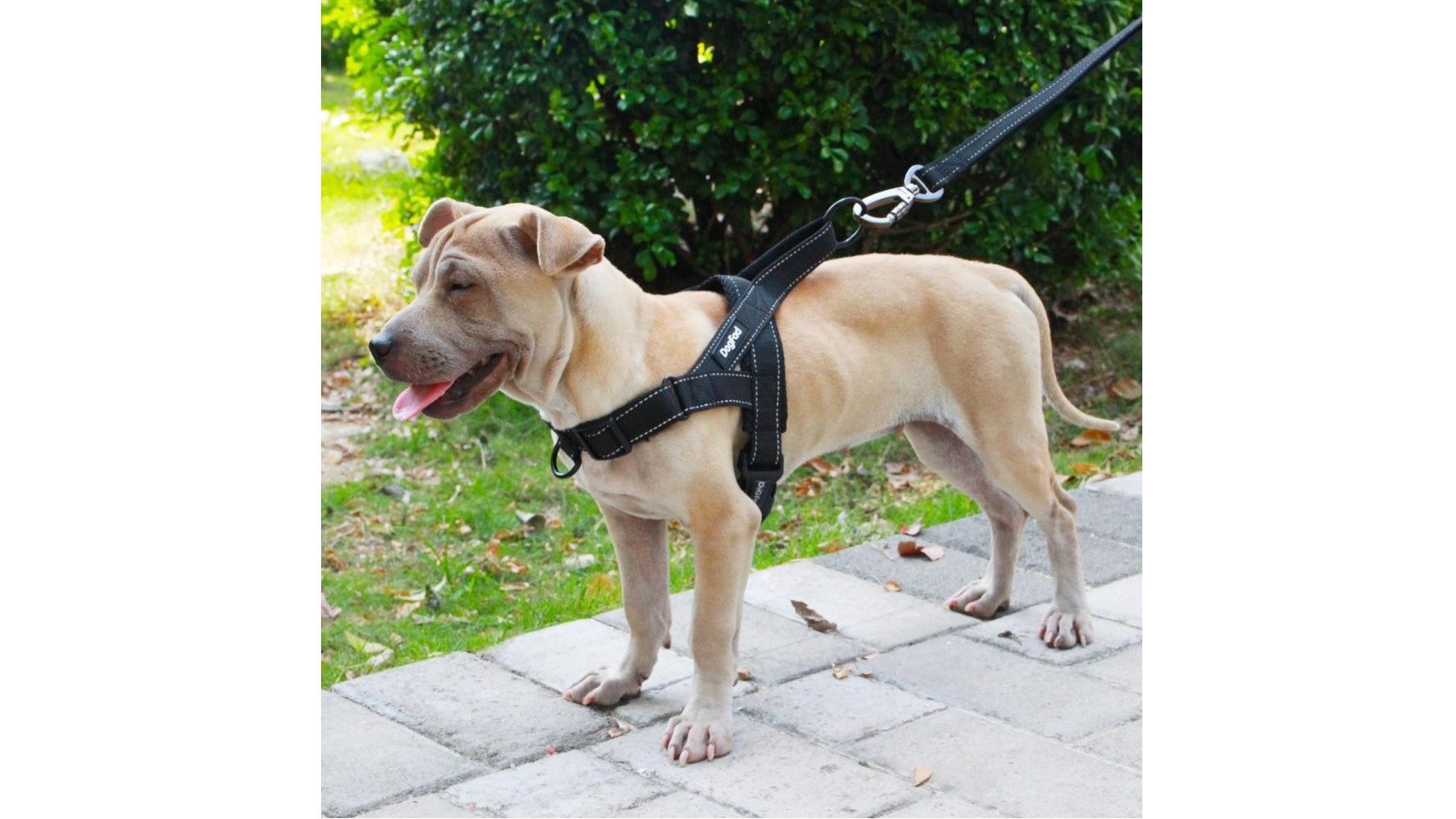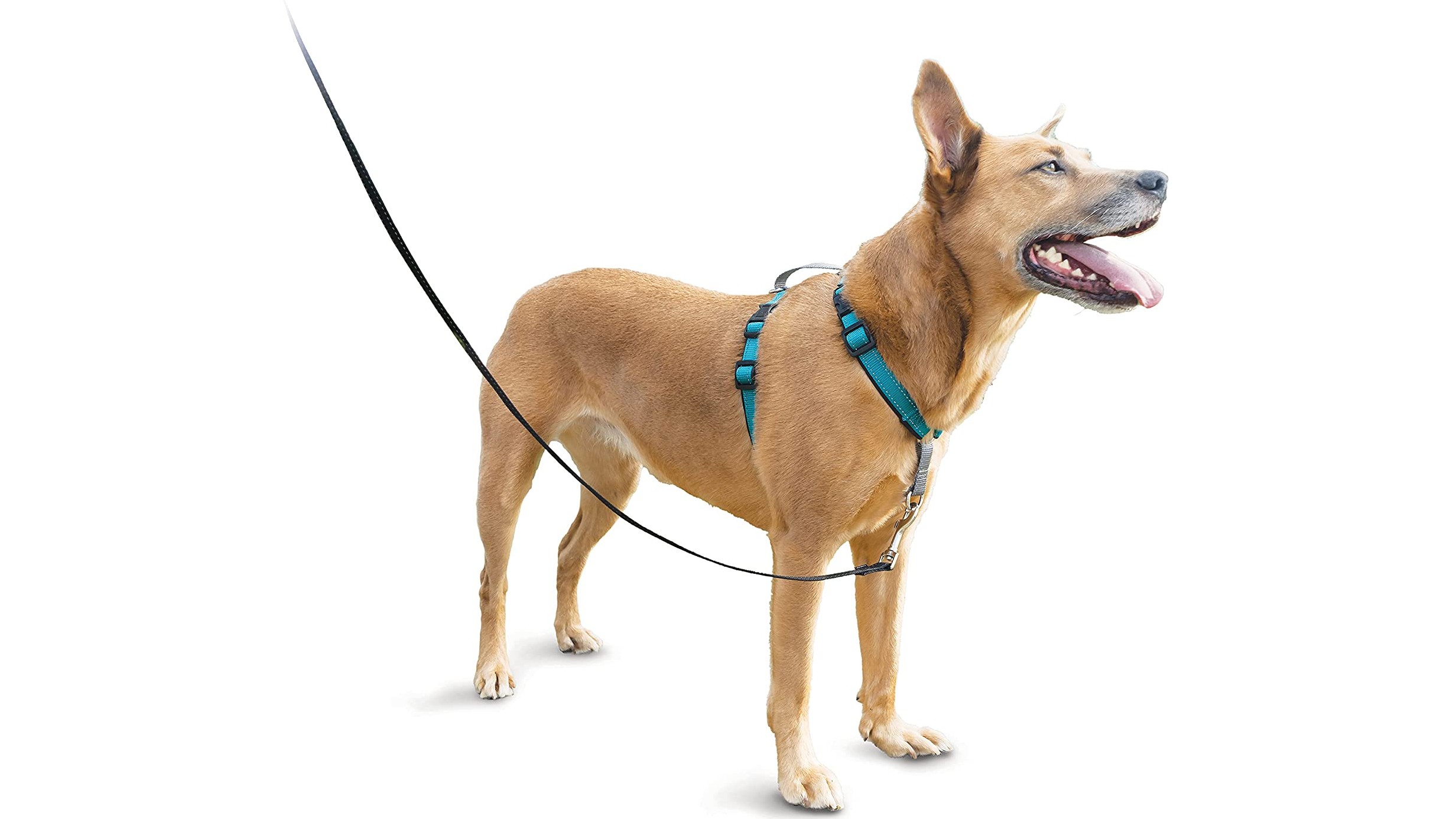Types of dog harnesses and collars: Which are the best fit
The pros and cons of common types of dog harnesses and collars from the view of a veterinary surgeon

Choosing types of dog harnesses and collars for the first time can be a little overwhelming. Most pet shops have a whole array of kit, so it can be hard to know where to begin!
In this article, we will look at some of the most common types available to help you to decide on the right dog harness and collar for your furkid. Armed with this information, you can then go and try some on. Ask your local shop if they have a fitting and measuring service in order to help you get the right size for your dog.
You can find out more about this in our vet's guide to how to measure a dog for harness, as well as detailed information about whether a harness vs collar is best for your dog in our further articles.
How to choose the right dog harness
There are a variety of different harnesses available which can be split into three main sub-categories which we will discuss below. As well as deciding which type of harness to choose, you will also need to consider a style.
Some harnesses consist of straps that look minimalistic and allow your dog to stay cooler in hot weather. However, the disadvantage is that they may chafe more than a vest style harness, especially in dogs that pull a lot. Vest-style harnesses tend to be bigger and bulkier, which some dogs don’t like. They are usually more straightforward to put on though. With that in mind, let’s explore the types of harnesses available.
Back clip harnesses

This is one of the most basic and commonly found harnesses, where the D ring for attaching your dog’s lead is on the fabric on your dog’s back. The advantage is that it is a widely available harness type, and should mean your dog doesn’t get tangled up in his lead.
The disadvantage of a back-clip harness is that they don’t discourage pulling behavior. Your dog will lean his force into the harness. Many sled dogs like huskies wear back harnesses when working.
Get the best advice, tips and top tech for your beloved Pets
We have a full guide that compares front-clip vs back-clip harnesses.
Front clip harnesses

Front clip harnesses are more useful for dogs that pull excessively. They look like a back clip harness, but the D-ring where you attach the lead is located on the dog’s chest area. This type of harness should still be easy to find in shops, and is preferred by dog trainers, as it discourages pulling. The dog feels pressure in front, and their reaction is to pull back from this, so they slow and stop tugging. However, the disadvantage of a front-clip harness is that the lead could get tangled in your dog’s legs more easily.
Dual clip harnesses
Dual clip harnesses have two D rings – one on the back, and one on the chest at the front. This gives some versatility as to how you use the harness. Alternatively, you could use a double-ended lead connected to both rings to give maximum control. However, the disadvantage of these harnesses is that they can be a bit bulkier, and are sometimes more expensive than front- or back-clip harnesses.
Head halters
Head halters deserve a special mention, as they are good for dogs that pull a lot, allowing you to control even large dogs with relative ease (think about horses that are lead around in only a head collar).
These work well for dogs that would otherwise lean into a harness and pull you along. Head halters look like muzzles, but allow the dog to freely open its mouth, eat, and pant. The halter consists of thin fabric that loops around your dog’s snout, with the lead usually attaching to a ring under their chin.
Head halters shouldn’t cause your dog any pain. However, some dogs do react quite negatively towards them, often pawing at their face or rubbing their nose on the ground as if to get the halter off. You may need to train your dog to get used to and accept the halter.

What is the best harness for a strong pulling dog?
For dogs that pull excessively on the lead, you should consider a front clip harness, a dual clip harness, or a head halter. Which one you ultimately decide on may depend on your budget and what suits your dog best.
What are the most comfortable dog harnesses?
Vest-style harnesses tend to be a bit more comfortable than strap harnesses. They cover a wider area of your dog, so chafing is less likely to occur, especially if your dog pulls. However, some dogs may feel hot in them during the warmer summer months.
How to choose the right dog collar

Now, we’ll explore some of the types of dog collar you might see for sale in pet shops. There are several types of collar available, but some are more useful than others.
Standard collars
Most dogs will wear a standard sort of collar, which is usually leather or fabric. It has a buckle to fasten it and adjust its size with. Most dogs get on well with these. and can be walked on a collar and lead comfortably if they are well trained. Technically, all dogs should wear one of these collars with an identity tag on it, as stipulated by law.
Martingale collars
These are usually fabric collars that have a small piece of material in them that tightens in the dog pulls. This has the advantage that the collar is unlikely to slip over your dog’s head, which can be good for dogs with fine heads like whippets or shelties. Some people also find that the slight tightening effect reminds dogs not to pull on the lead.
Leather greyhound collars
These collars are wider than standard-sized collars, and are typically worn by sighthounds such as greyhounds and Salukis. These breeds have muscular necks and fine dainty heads, which means a standard collar could slip off. These broad flat collars also mean any pressure put on your dog’s neck is spread over a wider area making them more comfortable.
Staffordshire Bull Terrier collars
Staffordshire Bull Terriers in the show ring often wear traditional broad leather collars with brass decoration. Many of these collars have the Stafford knot displayed on them, which is a symbol used in the county of Staffordshire, England, from where this breed originates.
Choke chain collars
A ‘choke chain’ is a chain collar that tightens when pulled. This type of collar is now frowned upon, with positive training methods taking the place of correction devices like these. There are a variety of choke chains or half choke collars still available, but we would suggest looking for help on training your dog rather than trying to stop undesirable behavior through discomfort.
Dog collars vs harnesses
All dogs should wear a collar with an identity tag in a public place, so you will need to choose a collar regardless. If your dog walks well to heel then a collar and lead may be all you need. However, if you need to have a bit more control over them because they pull excessively, then choose a harness or head halter, in addition to their collar.
Conclusion
Choosing a harness and collar for your dog can be confusing, but hopefully this article has helped to break it down for you. Ultimately, no one style suits every single dog, so think about what would work best for your pet, as well as trying a few on for size before buying.
Read next: Atlas Pet Company Lifetime Harness review.
Rebecca is a veterinary surgeon who graduated from the Royal Veterinary College in London in 2009. She enjoys medicine in particular and she is proud to have achieved a BSAVA postgraduate certificate in small animal medicine (with commendation) from Nottingham Trent University in 2021.
She has a wealth of experience in first opinion small animal practice, having done a mixture of day-to-day routine work, on-call emergency duties and managerial roles since 2009.
She writes on various feline and canine topics for the Veterinary Content Company and a freelance basis, including behavior, nutrition, and health. Outside of work and writing she enjoys walking her own dog, spending time with her young family and baking!

